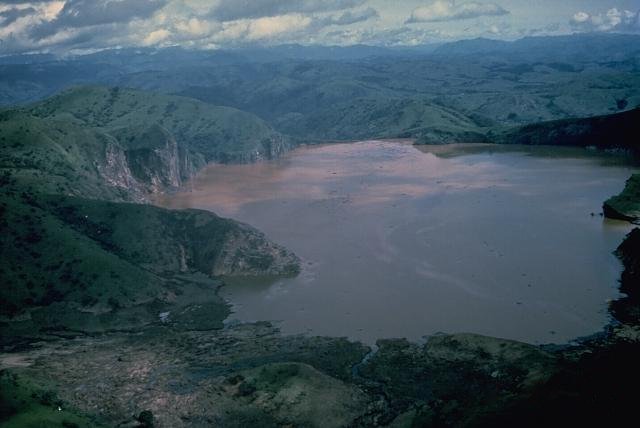It was a scene straight out of a horror film. Not a sound could be heard, the air was deadly still and the foul smell of rotten eggs would not go away. In several villages near Lake Nyos, human and animal corpses lay motionless. In August 1986, hundreds of people died suddenly in one of the rarest geological events of modern times.
background
Lake Nyos is a 1.9 km long and 200 m deep crater lake in northwestern Cameroon. Between 9 and 10 p.m. on August 21, 1986, villagers in the valley heard a strange rumbling. Those closest to the lake described a bubbling sound. Then white smoke began to rise from the lake and move north. Then people and animals suddenly fell dead, killed by a silent attacker. The cloud is called mazukua deadly layer of carbon dioxide.
About 1,800 people died, all living in the affected towns of Nyos, Cha, Fang, Mashi and Subum. Most of the residents were farmers. About 3,500 livestock were also killed. Insects stopped making noise. It was as if time had stood still. The lake’s water was normally a bright blue color, but after the eruption it turned reddish-brown.
A rescue team only arrived 36 hours later. Supported by the Cameroonian military, all rescue workers had to wear protective clothing and oxygen bottles. Since individual burials were unfortunately not possible for the dead, mass graves were dug.
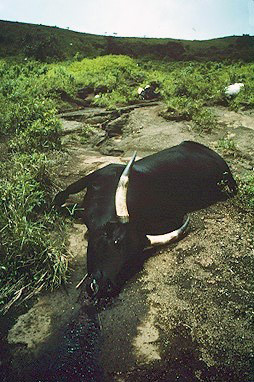
A dead cow from the Nyos disaster. Photo: Jack Lockwood/USGS
The consequences and effects were varied. The survivors (four in Nyos and about 5,000 in the surrounding area) all remained in a coma lasting between six and 36 hours. They reported losing consciousness and waking up dazed. They escaped death by living on higher ground.
Some had breathing problems, but these soon improved. Women suffered miscarriages, others suffered pneumonia. Some committed suicide after seeing the horror or losing family members. Pictures of the corpses also showed large wounds caused by lack of oxygen.
Limnic eruption
The Lake Nyos disaster is an example of a limnic eruption, also called a gas eruption. It occurs when a lake, usually a volcanic crater lake, suddenly releases large amounts of dissolved gases.
In this case, Lake Nyos contained mainly carbon dioxide with traces of sulphur dioxide. This gas release can occur when pressure builds up at the bottom of the lake due to geothermal activity.
When the pressure becomes too great, the gas quickly escapes to the surface, forming a dense, toxic cloud. The cloud can cover the ground, displacing oxygen and suffocating people and animals. Plant life does not seem to be affected.
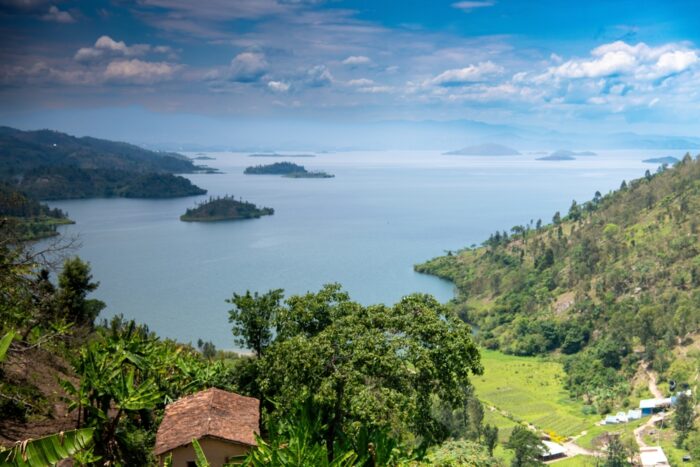
Lake Kivu could suffer a devastating limnic eruption. Photo: ondraphototravel/Shutterstock
Two more dangerous lakes
Lake Nyos is not the only incident. Just 100 km away, Lake Monoun erupted on August 15, 1984, killing 37 people. Lake Nyos erupted again almost exactly two years later.
Lake Nyos and Lake Monoun are two of three lakes in Africa that experience such eruptions. In the Democratic Republic of Congo, the third lake, Lake Kivu, emits not only carbon dioxide but also methane and hydrogen sulphide. Although it has not erupted as catastrophically as the other two, scientists fear it has the potential to release over 300 cubic kilometres of carbon dioxide and 60 cubic kilometres of methane, according to journalist Nicola Jones of Nature.
Although companies extract methane commercially from the lake, volcanic activity can trigger a limnic eruption at any time. There was a scare in 2021 when the Nyiragongo volcano erupted, releasing small amounts of gas from the lake. There is also the potential for a limnic eruption in a volcanic crater lake in Italy called Lake Albano.
In Russia, the Valley of Geysers is located in the extremely active Kamchatka region. Locals refer to an adjacent, low-lying area as the Valley of Death because of the heavier-than-air carbon dioxide that can blanket the ground and kill wildlife. While the Valley of Geysers is a tourist attraction (it is the second largest geyser field on Earth after Yellowstone), the nearby Valley of Death is understandably off-limits.

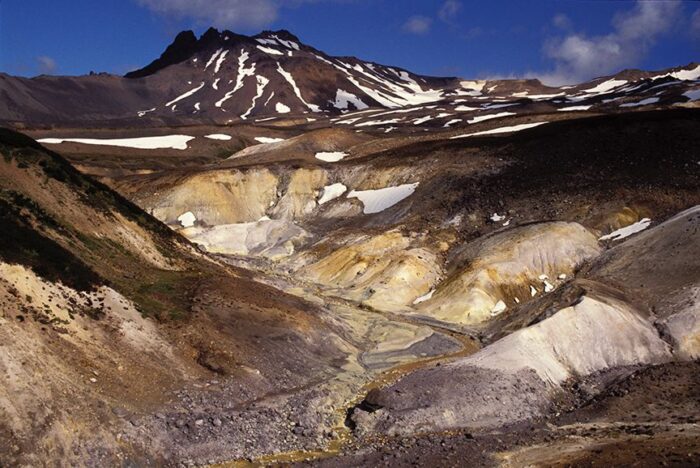
The Valley of Geysers (above) and the Valley of Death (below) in Kamchatka, Russia. Both: Jerry Kobalenko
How it happened
“Stunning concentrations of carbon dioxide formed as the gas mixed with air during its flow into the valleys,” says the official study by Peter J. Baxter et al.
In addition, on that calm night, the gas collected in depressions and remained there until dispersed by wind or solar heat. Although the initial plume that rose from the lake was estimated to have been 50 to 100 m thick, it is unclear how thick the blanket that settled over the villages was.
But why are these lakes concentrated in one region? Lake Nyos is not a very old lake, possibly only a few hundred years old. Lake Nyos and Lake Monoun are located in the Oku volcanic field, part of a 1,600 km long volcanic chain that stretches from Nigeria and Cameroon on the mainland to the southernmost island of Annobón.
Lake Kivu is located in the East African Rift Valley, which is notorious for its highly active and dangerous volcanic formations. Volcanism in the region is due to the split of the African and South American plates over 100 million years ago.
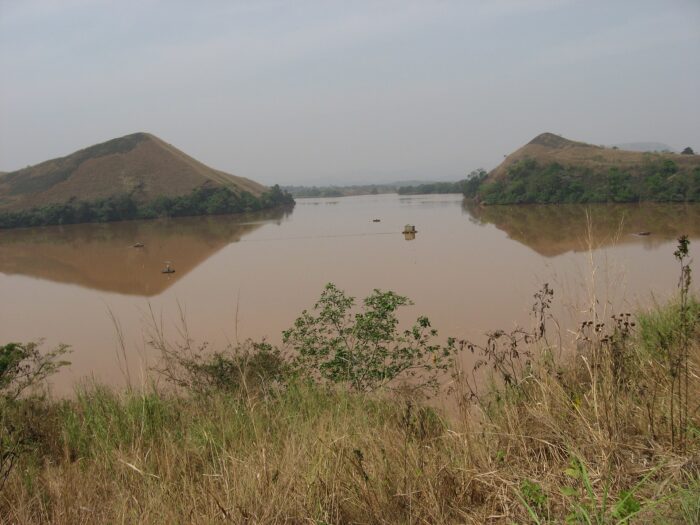
The first limnic eruption in Lake Monoun killed 37 people. Photo: Prosper Mekem/Wikipedia Commons
A CO2 bubble
According to NASA, Lake Nyos is located on the edge of an inactive volcano and a magma pocket. “Carbon dioxide from this magma slowly seeps through the Earth’s crust with groundwater and collects at the bottom of the lake,” NASA explains. “At some point, the gas becomes too concentrated and a CO2 bubble bursts from the lake.”
What caused the eruption? Most likely a landslide or a small earthquake. This released carbon dioxide, which increased to over 10%.
So why carbon dioxide? Why wasn’t it mixed with the usual volcanic gases – sulfur dioxide, hydrogen fluoride, hydrogen sulfide, hydrogen chloride and carbon monoxide? Although water tests showed that the accumulated gas was almost entirely carbon dioxide, the smell of rotten eggs or gunpowder after the eruption suggests that very small amounts of sulfur dioxide may have been present. However, when carbon dioxide is saturated with water, it also gives off that unpleasant smell.
prevention
To prevent a recurrence, measures were taken to control the accumulation in Lake Nyos. At first, scientists considered blowing up the lake with a bomb. Instead, they decided to gradually degas the lake.
In 2001, French engineers installed degassing pipes to release the trapped gases in a controlled manner. A plastic pipe reaching 203 m deep released the gas safely into the atmosphere. In 2011, the authorities installed two more pipes. Since they did not want to take any risks with Lake Monoun, three pipes were installed there too.
They have also relocated several communities and tried to prevent those from returning to the lake decades later. Apparently the lake is still toxic. However, residents claim this is their ancestral land and they are willing to take the risk.

